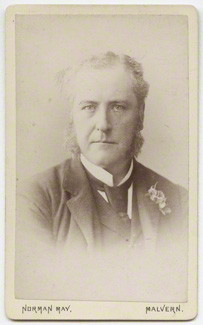Loading AI tools
British Conservative politician From Wikipedia, the free encyclopedia
Frederick Lygon, 6th Earl Beauchamp PC DL (10 November 1830 – 19 February 1891), styled The Honourable Frederick Lygon between 1853 and 1866, was a British Conservative politician.
The Earl Beauchamp | |
|---|---|
 | |
| Lord Steward of the Household | |
| In office 21 February 1874 – 21 April 1880 | |
| Monarch | Victoria |
| Prime Minister | Benjamin Disraeli |
| Preceded by | The Earl of Bessborough |
| Succeeded by | The Earl Sydney |
| Paymaster General | |
| In office 24 June 1885 – 28 January 1886 | |
| Monarch | Victoria |
| Prime Minister | The Marquess of Salisbury |
| Preceded by | The Lord Wolverton |
| Succeeded by | The Lord Thurlow |
| In office 19 August 1886 – March 1887 | |
| Monarch | Victoria |
| Prime Minister | The Marquess of Salisbury |
| Preceded by | The Lord Thurlow |
| Succeeded by | The Earl Brownlow |
| Personal details | |
| Born | 10 November 1830 |
| Died | 19 February 1891 (aged 60) Madresfield Court, Worcestershire |
| Nationality | British |
| Political party | Conservative |
| Spouse(s) | (1) Lady Mary Stanhope (1844–1876) (2) Lady Emily Pierrepont (1853–1935) |
| Children | 9, including: William Lygon, 7th Earl Beauchamp Margaret Russell, Baroness Ampthill Maud, Lady Hoare, Viscountess Templewood Lady Mary Trefusis |
| Parent(s) | Henry Lygon, 4th Earl Beauchamp Lady Susan Eliot |
| Alma mater | Christ Church, Oxford |
Beauchamp was the third son of Henry Lygon, 4th Earl Beauchamp, and Lady Susan Caroline, daughter of William Eliot, 2nd Earl of St Germans. He was educated at Eton, was President of the Oxford Union in 1851 and graduated from Christ Church, Oxford in 1856 with an MA degree.
Beauchamp was Member of Parliament for Tewkesbury from 1857 to 1863 and for West Worcestershire from 1863 to 1866. In 1859 he was appointed Civil Lord of the Admiralty. On 4 March 1866 he inherited the earldom of Beauchamp on the death of his childless brother. He served under Benjamin Disraeli as Lord Steward of the Household between 1874 and 1880 and under Lord Salisbury as Paymaster-General between 1885 and 1886 and again between 1886 and 1887. In 1874 he was sworn of the Privy Council.[1] He was also Lord Lieutenant of Worcestershire between 1876 and 1891.
In addition to his political duties Frederick Lygon also found time to be a great philanthropist. He was one of the founders of Malvern Boys' College and later a chairman of the college council. He was also the driving force behind the building of the Almshouses and St Leonards Church at Newland, consecrated in 1864,[2][3] conceived by his uncle John Reginald Pindar and his wife Charlotte. Frederick also finished the building of the church at Madresfield consecrated in 1867[4] which was the gift of Henry 5th Earl Beauchamp who had died before the work was completed.
Beauchamp was also the second President of the Folklore Society, serving in that role between 1880 and 1885.[5] Even though he was one of the longest serving Presidents of the Society, It has been suggested that his links with the Society should be seen more as "aristocratic patronage" rather than active academic interest.[6]
He also helped to establish the Pusey Memorial House (now known as Pusey House, Oxford).[7]
He owned 17,000 acres, mostly in Worcester.[8]

Lord Beauchamp married Lady Mary Stanhope (3 February 1844 – 30 June 1876), daughter of Philip Stanhope, 5th Earl Stanhope, and his wife Emily Harriet Kerrison, at St George's Church in Hanover Square, London, on 18 February 1868. They had five children:
Lady Beauchamp died on 30 June 1876, and on 24 September 1878 Lord Beauchamp married Lady Emily Pierrepont (16 March 1853 – 11 May 1935), daughter of the 3rd Earl Manvers and his wife Georgiana Jane E. F. de Franquetot, at Perlethorpe in Nottinghamshire. They had four children, two sons and two daughters.
Lord Beauchamp died on 19 February 1891,[12] aged 60, at his home, Madresfield Court, from a heart attack he suffered at dinner that night. His eighteen-year-old eldest son William succeeded him in the earldom. He was buried in the churchyard of St Mary the Virgin Madresfield near the south east corner of the church alongside his first wife Mary;[13] his second wife Emily was later interred on his other side. In his will he had expressly forbidden any tribute or monument.[14]
Seamless Wikipedia browsing. On steroids.
Every time you click a link to Wikipedia, Wiktionary or Wikiquote in your browser's search results, it will show the modern Wikiwand interface.
Wikiwand extension is a five stars, simple, with minimum permission required to keep your browsing private, safe and transparent.